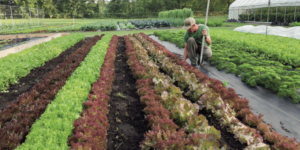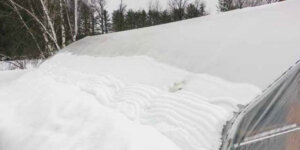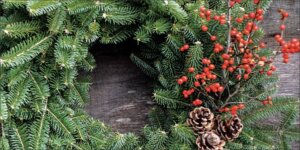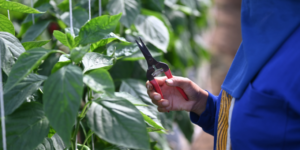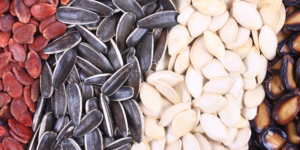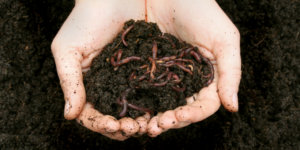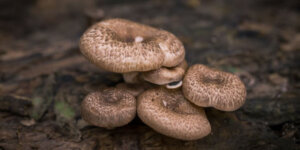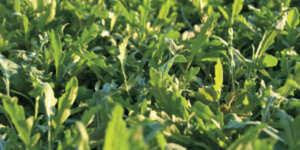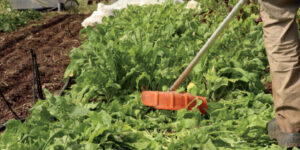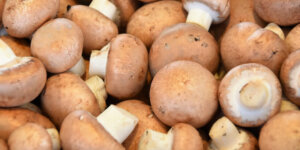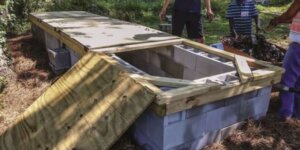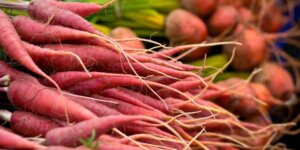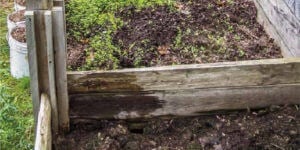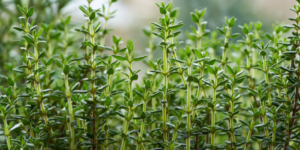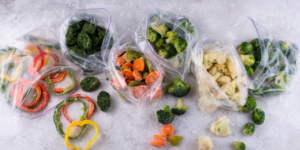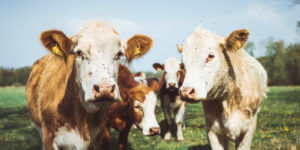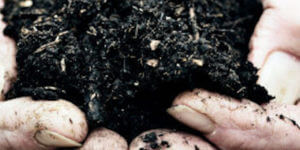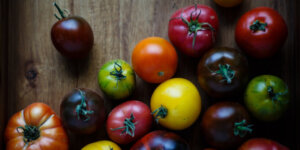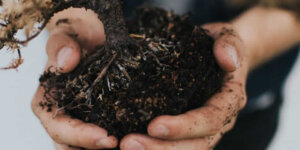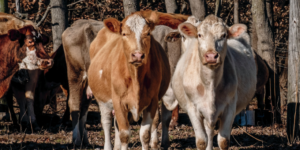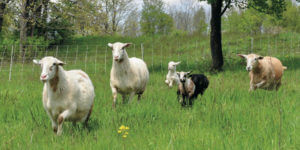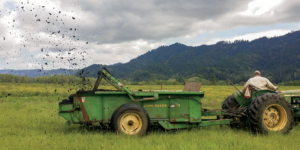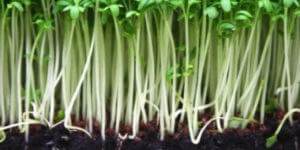Chelsea Green Blog
Farming & Homesteading
Starting A Micro-Farm: Tips for Getting Smaller
Want to set up your own micro-farm? These tips will help you learn how to simplify your work, increase profitability, and shape your ideas so you can create the perfect tiny farm for you. The following is an excerpt from The Lean Micro Farm by Ben Hartman. It has been adapted for the web. Unless…
Read MoreBuild Your Own Cold Frame: Get a Jump on the Planting Season
Extend your planting season with a cold frame! Building your own cold frame is a simple way to keep growing plants all winter long. The following is an excerpt from Four-Season Harvest by Eliot Coleman. It has been adapted for the web. What Is A Cold Frame? Gardeners should dedicate a monument to the cold…
Read MoreIs Your Greenhouse Winter-Ready? Dealing with Snow on Your Greenhouse
Want to keep your protected crops heated and healthy all season? Get your greenhouse ready for winter with these snow removal tips! The following is an excerpt from The Greenhouse and Hoophouse Grower’s Handbook by Andrew Mefferd. It has been adapted for the web. (Photographs courtesy of Andrew Mefferd unless otherwise noted.) Dealing with snow…
Read MoreHow To Create A Homemade Wreath
From clipping the proper branches to tying the right knots, building a wreath takes patience and precision. Create this holiday craft with your family to decorate your home, or spread the joy to others by gifting or selling your homemade wreath. The following is an excerpt from Carving Out a Living on the Land by…
Read MoreA Guide to Pruning Protected Crops
Pruning is essential for keeping protected crops healthy & balanced through the winter months. Keep reading for some helpful tips on pruning greenhouse and hoophouse plants! The following is an excerpt from The Greenhouse and Hoophouse Grower’s Handbook by Andrew Mefferd. It has been adapted for the web. Unless otherwise noted, all photographs copyright © 2017…
Read MoreKeeping Seeds Organized: Saving & Storing
Storing seeds is the key to having a successful growing season. Follow these tips for keeping seeds organized so you’re ready to plant as soon as the time is right!
Read MoreSoil Is Alive: What Lives In Our Soil?
Ever wonder what worms and centipedes are doing as they crawl through your soil? They’re actually working to improve the soil’s health, which benefits the environment and all living things in the long run. The following is an excerpt from Farming on the Wild Side by Nancy J. Hayden and John P. Hayden. It has been adapted…
Read MoreGrowing Shiitake Mushrooms in a Garage or Yard
Learn how to grow shiitake mushrooms in almost any environment, including your yard and even your garage!
Read MoreThe Endless Arugula Bed
What if we told you that there was a way to extend your growing season and save time & money? The answer is all in arugula. With quick hoops and greenhouse film, you’ll be on your way to harvesting sweet & flavorful arugula in no time. The following excerpt is from The Resilient Farm and…
Read MoreNo-Till Arugula Start to Finish
Growing no-till arugula is a simple way to grow your own food. These greens can be used on pizzas, salads, and as a garnish on almost any dish.
Read MoreBrew Outside the Box: Making Mushroom-Infused Beer
For the adventurous brewer infusing mushrooms into brews is a great way to combine the medicinal benefits of fungi with one of the world’s most consumed drinks.
Read MoreVermicast Structures: Worm Real Estate
Farmers rely on earthworms to create vermicomposting systems to improve seed germination, enhanced seedling growth and increased plant productivity.
Read MoreBuilding Your Own Root Cellar for the Fall Harvest
Building a root cellar is a great way to keep your harvest fresh through the cold months. With protection from weather and animals, these cellars can be just as good as a regular refrigerator. They can be built into a wall in your basement, dug into the ground, or simply buried. The following excerpt is…
Read MoreComposting as if it Mattered
Composting is more than a way to minimize waste and a garden supplement. It is a method, when practiced and perfected, can supply all the needs of your crops and soil.
Read MoreAbout Thyme: Growing, Harvesting, and Drying Thyme
Thyme is easy to grow and harvest in almost any condition. Follow these tips to get started growing, harvesting (and drying) thyme in your home or backyard!
Read MorePreserving Veggies: Tips for Freezing Vegetables
Try your hand at preserving veggies by freezing them! Freezing vegetables is a quick, simple way to preserve them for winter meals.
Read MoreAll About Cows: What has Four Legs, Says “Moo,” and Could Save the Planet?
Cows can help rebuild soil and restore land to its rightful state—improving carbon sequestration, natural water cycles, and soil fertility and nutrient density.
Read MoreArid Agriculture: Strategies to Reduce Heat Stress in Crops and Livestock
Become more resilient when temperatures are on the rise to reduce heat stress and grow food in even the most arid environments.
Read MoreA Guide to Great Compost From Eliot Coleman
Compost is the key to an abundant garden. Learn the basics of making compost from gardening expert Eliot Coleman, and enjoy the joy of growing your own food.
Read MoreHow to Save Tomato Seeds
As your favorite variety of home grown tomatoes start ripening on the vine this summer, be sure to save those seeds for next year’s planting. It takes a bit of care to get the seeds out of the gelatinous tomato goo they’re suspended in, but once you’ve done it you can use those seeds to…
Read MoreFocusing on Soil Remediation with Fungi
Nature does what needs to be done if we let her. The fungi and the plants will sing this soil redemption song for us. As the fungi and the plants always have.
Read MoreBiodynamic Farming: Unlock Fertile Fields with Cows & Compost
“An immediate halt to chemical fertilizing and returning to the use of compost instead would turn degeneration into regeneration.”
Read MoreThe Art of Grazing: What Is “Good” Silvopasture Grazing?
If you’re not familiar with silvopasture, you should be. The integrated system offers both the promise of land regeneration and economic livelihood.
Read MoreLand Degradation: The Secrets of Fixing the Soil with Biochar
Some of the world’s most productive and resilient soils contain significant quantities of “natural” biochar. Author Kelpie Wilson challenges us to “change our perspective from ‘too much carbon in the air’ to ‘not enough carbon in the soil.’ We are good at being miners and exploiting resources, so let’s mine the air and stash the…
Read MorePerennial Veggies: The Benefits of Perennial Vegetables
Think about how much work your perennial flower beds take compared to your annual vegetable garden. In a busy year, your perennial garden largely sails through despite neglect. Once your perennials are established, and if they are suited to your climate and site conditions, they can be virtually indestructible. An annual vegetable garden, as we…
Read More

